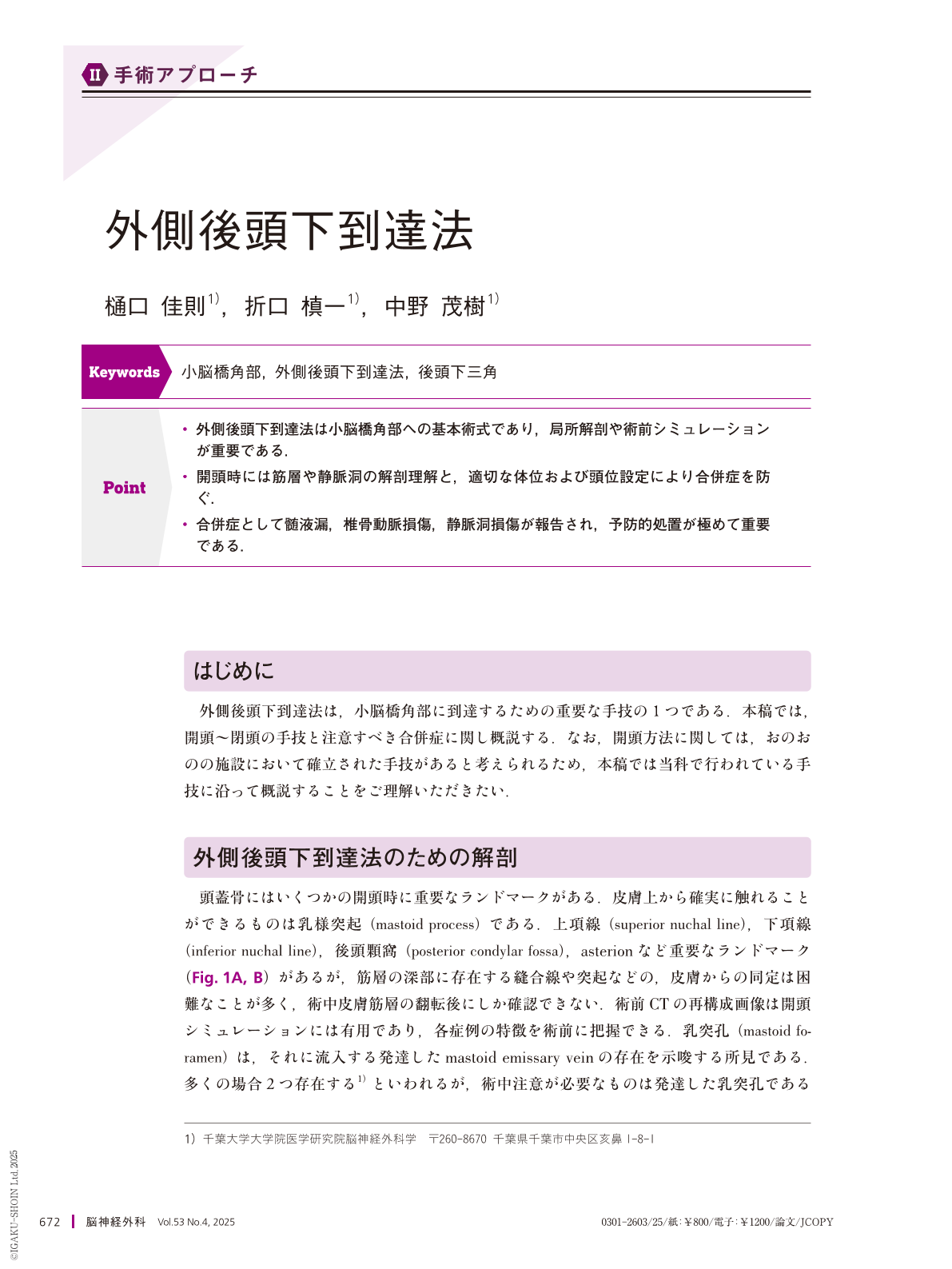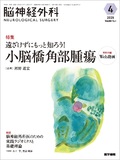Japanese
English
- 有料閲覧
- Abstract 文献概要
- 1ページ目 Look Inside
- 参考文献 Reference
Point
・外側後頭下到達法は小脳橋角部への基本術式であり,局所解剖や術前シミュレーションが重要である.
・開頭時には筋層や静脈洞の解剖理解と,適切な体位および頭位設定により合併症を防ぐ.
・合併症として髄液漏,椎骨動脈損傷,静脈洞損傷が報告され,予防的処置が極めて重要である.
*本論文中、[Video]マークのある図につきましては、関連する動画を見ることができます(公開期間:2028年8月まで)。
The lateral suboccipital approach is a fundamental surgical method for accessing the cerebellopontine angle. This article outlines critical aspects, including anatomical landmarks, surgical positioning, and techniques for craniotomy and dural opening, based on practices at our institution. Important landmarks include the mastoid process, asterion, and suboccipital triangle, which contains critical structures such as the vertebral artery. Preoperative three-dimensional computed tomography imaging significantly aids surgical planning through visualizing bone landmarks and venous sinus positioning. Optimal patient positioning, involving careful head flexion and rotation in the park-bench position, is essential to minimize complications such as airway edema. Accurate muscle dissection and careful handling of the mastoid emissary vein are detailed to prevent venous sinus occlusion. Significant complications associated with this procedure include cerebrospinal fluid (CSF) leakage, vertebral artery injury, and venous sinus injury. Strategies for preventing CSF leakage include meticulous dural closure using artificial dura and fat grafts. While rare, vertebral artery injury demands precise handling to prevent severe ischemic complications. Overall, careful anatomical understanding, rigorous preoperative planning, and a meticulous surgical technique are paramount to minimize complications associated with the lateral suboccipital approach.

Copyright © 2025, Igaku-Shoin Ltd. All rights reserved.


